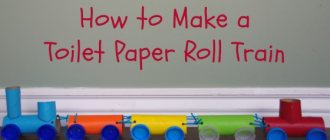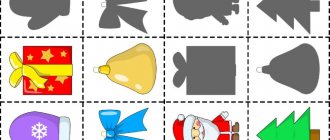I am a happy grandfather, my grandchildren are very active creatures and are interested in everything in the world. Including paper production. They are already trying to make it in the kitchen. These few posts are for them and their peers. Since my grandchildren are of different ages, the youngest is a kindergarten graduate, the eldest is almost a university graduate, telling them about paper production is not an easy task.
However, I will try to explain the importance of paper production in meeting the immediate needs of people and in order to demonstrate how industrial production, with reasonable management, can not conflict with nature. Perhaps the posts will also be of interest to adults who are not familiar with paper production and the importance of its production for the sustainable development of our civilization. I will try to talk about this as briefly and clearly as possible.
What is paper made from?
WOOD
Nowadays, in most cases, paper is made from wood. Wood is removed from the forest. So paper production and forests are connected to each other. We will definitely talk about this close connection with you, because it is important in order to understand that reasonable paper production does not destroy the forest, but lives with it in good neighborhood with mutual benefit.
It should be noted that wood cannot be completely processed into paper.
The picture shows the parts that make up trees. So, most often, the barrel comes into paper production. The bulk of paper is produced from such wood. This is paper for books and magazines, packaging, towels, etc. But paper production also occurs using leaves and bark.
WOOD PROCESSING WASTE
Let us immediately note that paper can be produced both from trees and from wood waste generated during the production of boards, timber, slats, sleepers and other building materials; they are also called lumber.
Wood waste can come in different sizes. Here in the picture they are in the form of scraps of boards, bars, slats.
The waste in this picture is much smaller, it is closer to sawdust, but sawdust is quite suitable for paper production.
WASTE PAPER
But this is not all the materials from which paper is made. In some countries, up to half of all paper and cardboard today is made from paper and cardboard that have served mankind. This paper and cardboard is called waste paper.
Waste paper is used packaging, packaging of goods, dairy and other liquid products; These are old newspapers, magazines, paper from offices, where they print on it and throw away a lot of drafts before they print it as needed.
Waste paper is also generated in your schools and kindergartens. Sometimes books also end up in waste paper. These are books in which the information is outdated and of no interest to anyone, or books that are completely worn out. Although books in waste paper are somehow not right and a book in waste paper always attracts attention and often evokes pity. Nevertheless, people say about some books: “This is waste paper” and they are right... In developed countries, up to 90% of the generated waste paper is recycled again into paper and cardboard.
Nowadays, most enterprises add waste paper to cellulose and wood pulp.
Packing and cutting
The method of cutting paper rolls differs depending on the plans for its use. The rolls are cut in a slitter and then wound into several rolls of smaller volume and diameter. Then they are divided into ready-made sheets for the printing shop - for example, by laser (the edges are neat, there is no carbon deposits on them).
Finished paper rolls
The last stage of paper making is packaging. Its most common types:
- packaging in packs of 250-1,000 sheets, wrapped in kraft paper or other dense and waterproof material;
- palletizing - transferring sheets onto flat rectangular stands with recesses for gripping and fastening;
- mixed method - first the sheets are collected in bundles and then placed on pallets;
- "roll" packaging (rolls up to 10-15 kg) - suitable for technical, large-format packaging paper (can be carried manually, without ramps or special equipment).
Paper from clothes
Not so long ago, some 150 years ago, paper was made exclusively from old rags (which our clothes turn into after wear), from old fishing nets, from old sails and ropes removed from sailing ships. The production of paper from rags began in the city of Samarkand in the 8th century. For 10 centuries, paper was made from rags!
Rag collectors walked and drove along the streets of medieval cities and villages with carts and boxes. Just like knife sharpeners, gypsies and beggars, they were a common sight on the streets of that time.
The picture shows a rag collector in the German city of Nuremberg.
With the increase in demand for paper and the emergence of more and more manufacturers, rags became scarce. It has become scarce. Governments passed special laws requiring residents to hand over certain amounts of rags for paper production. Moreover, certain residential areas and settlements were attached to paper mills (as paper production enterprises were called). In some cities, each paper mill had its own rag pickers. They were given a special certificate. The number of assemblers for each mill was strictly limited.
In the picture on the right there are female workers sorting rags. They have sharp knives in their hands, with which they cut off unusable sections of rags.
At the very end of the era of rag paper in the 19th century, rags, after sorting and primary (there were subsequent) cleaning, began to be boiled in such rotating boilers with hot steam supplied to them and with the addition of soda. This made it possible to better dissolve the fabric into fibers.
The production of paper from rags is, in fact, the first in the history of mankind, the production of a new material from waste. The first case of recovery or, as they now say, waste Textile waste was transformed into an expensive and in-demand new material - paper.
Paper mill or manufactory. Here you can see all the operations of paper production from scooping from the paper pulp onto a sieve with the transition to pressing and drying.
Paper was produced from rags boiled and crushed in paper mills. It was hard manual labor consisting of constantly repeating operations. The master scooper manually poured each sheet onto a sieve, then the wet sheet was covered with cloth - this was done by the fuller and, on a felting hill, he squeezed water out of the sheet by rolling with increasing pressure. The wet sheet passed from the mesh to the cloth, and was covered with a second cloth. A stack of such pies was made from cloth and sheets of paper, and this stack, it was called “masonry,” was pressed on a screw or hydraulic press. After pressing, the “sweeper” worker separated the layers of paper from the cloth and placed them in a pile. Wet sheets were hung out to dry on “hangers.”
Depending on the source of the rag, the paper was of a certain quality. By the brands of paper one can judge the clothing of people of the late Middle Ages.
Here are the types of fabrics collected in Germany and what grades of paper were produced from them.
- Peasant linen shirts - special paper of medium quality;
- Rough linen shirts - paper for bags;
- Thin flaps of linen (rags) - men's paper;
- Nettle fabric, Dutch canvas - notepaper;
- Blue linen robes - blue paper;
- The average domestic canvas is printed paper;
- Ship waste (sails, ropes) - brown paper;
- Bad rags are wrapping paper.
Presentation for older preschoolers “Paper. History of origin. Making paper."
Brief description of the document:
Goal: Formation of older preschoolers’ ideas about paper. Objectives: Educational: To acquaint pupils with the history of the origin of paper, with the stages of its production in modern conditions; To clarify and expand children’s ideas about the types of paper and some of its properties. Developmental: To develop cognitive activity, the research interest of older preschoolers in studying the world around them. Educational: To educate ecological culture, respect for nature. Presentation: 1 slide. Presentation title Paper. History of origin. Paper making. Paper properties. 2 slide. In ancient times there was no paper and books. Ancient people depicted moments of their lives using drawings on rocks and stones. For our contemporaries, these are original “books” from which we learn about the activities, life, and traditions of our ancestors. 3 slide. Then the peoples who lived in Mesopotamia began to use small tablets made of clay to record information. Symbols were applied to wet clay tablets with a sharp stick, after which the tablet was dried in the sun to give it strength. 4-5 slide. Papyrus is a writing material obtained from a plant of the same name that grew in the marshy areas of the Nile Delta. The lower part of the stem, about 60 centimeters long, was freed from the outer green layer, and the white core was removed and cut into thin strips with a knife. After this, the resulting strips were kept in fresh water for 2-3 days. Next, the softened strips were rolled over a board with a wooden rolling pin and placed in water for a day, rolled again and placed in water again. As a result, the stripes became translucent. Next, they were stacked on top of each other, dehydrated under pressure, dried and smoothed with a stone. 6-7 slide. Parchment was obtained by special, very complex processing of the skins of young animals - calves, lambs, goats and donkeys. Unlike papyrus, parchment was much stronger, more elastic, more durable and could be written on both sides. Making parchment was a very difficult process, and therefore this material was very expensive. 8 slide. In Rus', our ancestors used birch bark or, as it is also called, birch bark as a “notebook”. On the inside of the bark, letters were written with a tool made of metal or bone. This writing device was called a writing device. Slide 9 Bamboo books were made from thin bamboo plates, held together into a single sheet by two rows of string. The Chinese book was similar to modern sliding curtains. 10 slide. For the first time, the technology for producing paper from plant fibers was developed in China. The ancient manual technology of making paper was as follows: the raw material was ground and boiled with the addition of glue and water to obtain a homogeneous fibrous mass. The cooked mass was scooped out with a special mold and tipped onto a smooth surface. The resulting sheet was pressed, dried, and smoothed. Later in Europe they learned to make it from mulberry bark. Since mulberry is a southern plant and is not widespread everywhere, European scientists were looking for a different material for making paper. We tried to make it from unnecessary rags. A sticky mass was boiled from old rags, then the water was squeezed out using a press and paper was obtained. Wood became a cheaper material. 11 slide. Paper production Stage 1: Wood harvesting 12 slide. Paper is produced at a paper mill or paper and pulp mill. Slide 13 Wood chopping. At the factory, machines strip the bark from the wood and grind it into chips. Slide 14 The crushed wood is boiled with the addition of various substances and dyes. Slide 15 The paper pulp, turned into pulp, enters the paper making machine. First, the slurry is poured onto the mesh of the paper machine. 16 slide. The raw paper strip passes through a series of rollers. Some rollers squeeze out the water, others, heated from the inside by steam, dry it, and others polish it. Slide 17 A smooth white strip of paper comes out of the machine and is wound into a huge roll. Then these rolls are sent to printing houses, where they are cut into sheets. 18 slide. Types of paper. Discussion with children: What kind of paper is there? Where is it used? 19 – 21 slides. Paper properties. Conducting experimental research activities. Properties: Paper tears, gets wet, burns, is cut with scissors, crumples. 22 slide. Interesting! One tree produces 2857 notebooks of 12 pages. It takes 60 years to grow a mature tree. That is why it is important to use books, albums and notebooks carefully, because all of these are cut down trees. Paper can be produced from waste paper. 100 kg. old paper will help save 1 tree. 23 slide. Save the tree - hand over the waste paper!
Modern production
Modern paper production
Previously, paper was made from cotton, silk and linen rags. Today the main material is wood . The leaders are conifers, birch, poplar, chestnut, and eucalyptus. Canada, Russia, the USA, Scandinavia, Japan, and Germany are famous for their large enterprises. The plants are fully automated.
The logs are delivered to workshops where units clean them of bark. The resulting material is ground into fine fibers (fibrils). Mix with water to swell, and remove the remaining wood chips again. Then the homogeneous mass is placed in special cauldrons, where it is boiled in a mixture of strong acids. In the same way, bark and wood chips are processed separately, converting them into cellulose.
Then it is mixed with log fibers, waste paper (the ink is previously removed) and continues to be processed in an acid brew. To give the future paper opacity, kaolin is added. Glue impurities contribute to the smoothness of the surface and water-repellent properties. Various oxides are used in the production of special grades of expensive paper webs.
Paper production today
Now comes the turn of the most important mechanical giant of the plant - the paper-making machine. The giant reaches a length of 100 m and a width of 18-20 m. A metal mesh is constantly scrolled between its two shafts. Raw materials that have gone through several stages of processing are laid out on its surface. Unnecessary moisture flows through the cells, and the mass is evenly distributed over the surface.
Next, the material goes under huge press shafts to form the web. Afterwards, drum irons iron the giant sheet, removing any remaining water. Finally, huge calenders press the paper surface, giving it a finished look. Now you can send rolls for cutting and packaging into sheets of different sizes.
Interesting: How and what is glass made from? Description, photo and video
Human needs for paper do not dry out, and its production is considered harmful. Damage is caused to forests that are subject to massive deforestation. Plants use acids. Waste and harmful substances enter nearby water bodies and into the air. 30,000 school notebooks can be made from 1 ton of paper. But to get it, you will have to cut down 17 trees. It is important to replenish natural resources . Then you won’t have to take children to museums centuries later to explain what paper is and how important it once was.
Paper Quality Criteria
- Strength - resistance to tearing and compression during high-speed printing must be high.
- Density - thin sheets are used for intaglio printing, thick sheets are used for packaging (range - from 60 to 300 g/m²);
- Smoothness - the higher it is, the better the image details are reproduced, the tighter the contact of the sheets with the printing forms;
- Whiteness - the indicator falls in the range of 60-98%;
- Opacity - the less the sheet is translucent, the less will be the degree of image development on the reverse side (for ordinary office paper - from 89%);
- Porosity - paint adheres better to porous material, but the prints lose their saturation.
- Abrasion Resistance – If it is low, the viscous printing inks will “pluck” fibers from the sheets and this will contaminate the parts of the printing equipment.
- Absorbency - the higher it is, the faster the paint will adhere to the surface of the sheet.
- The presence of sizing - with it the top layer will be durable, resistant to moisture and glue.
Watch an interesting report from a paper production plant:







